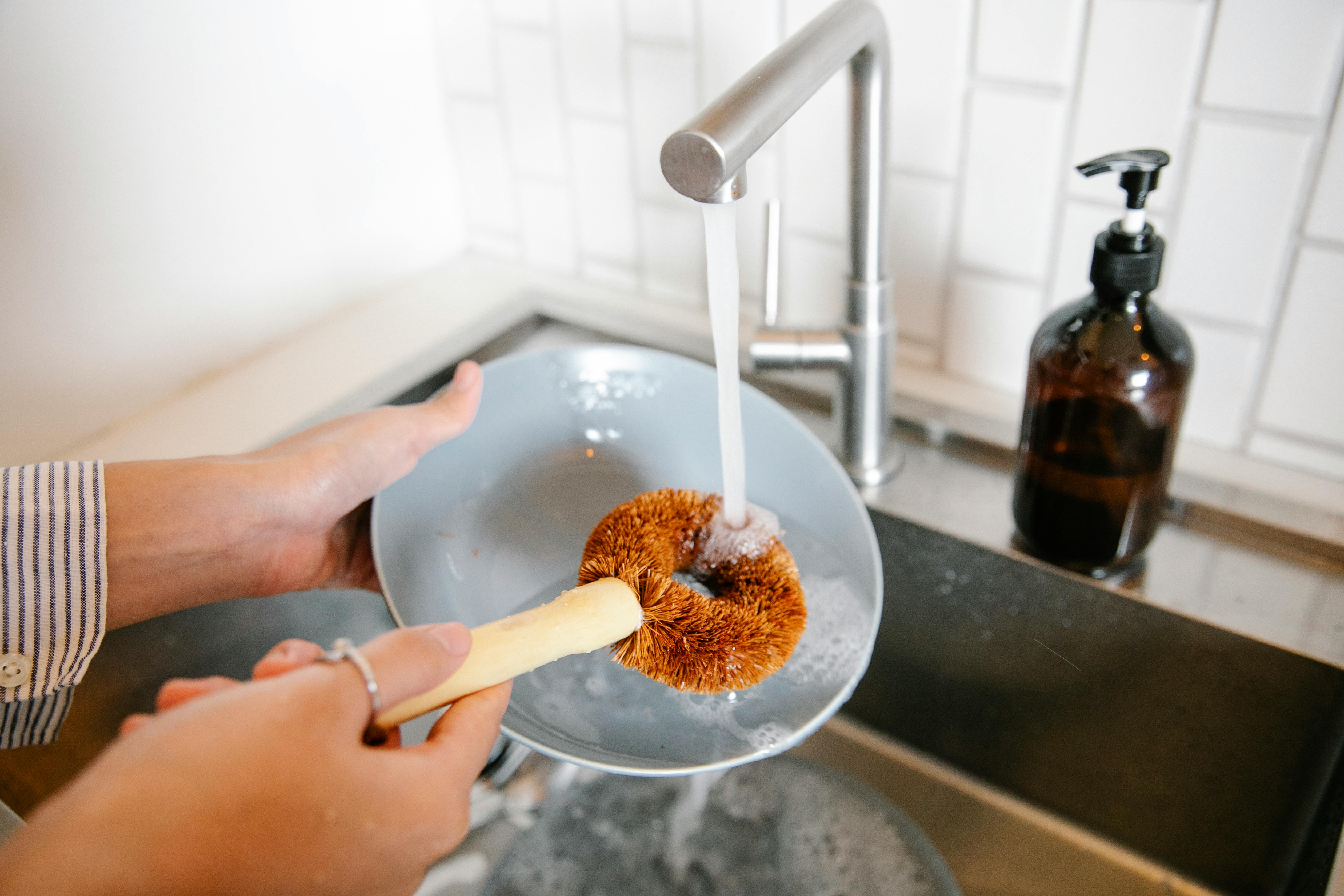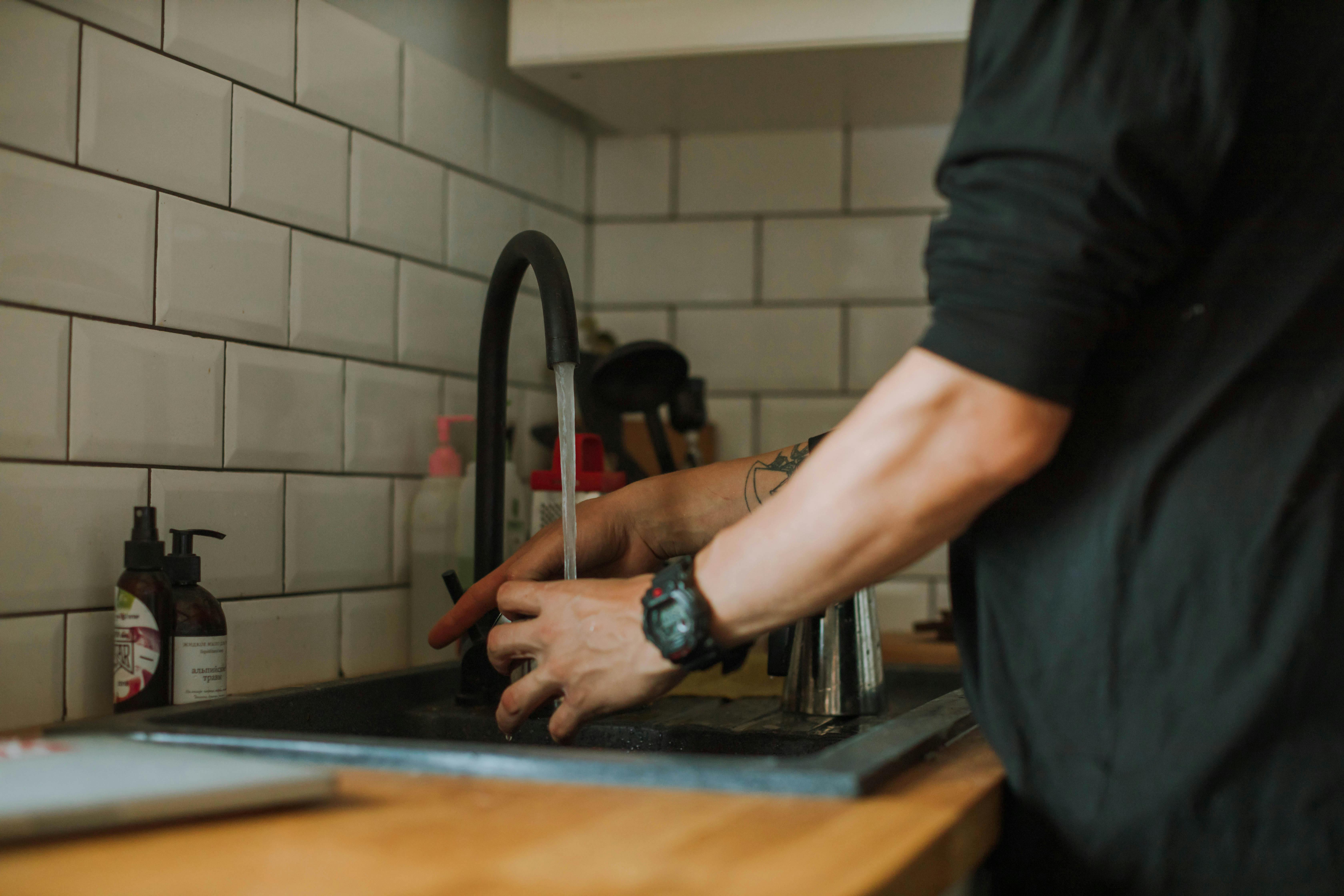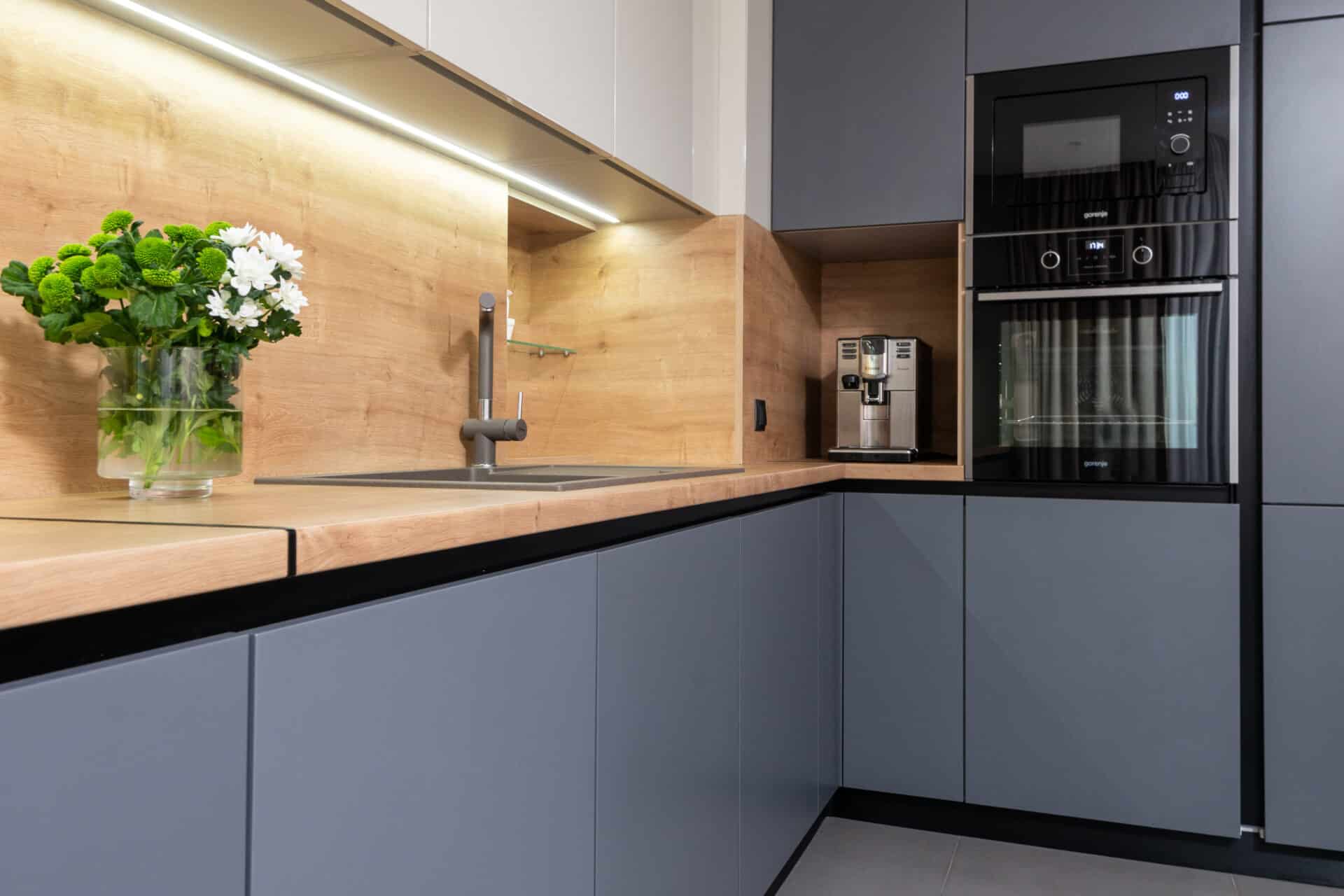Low water pressure in a kitchen sink can be a frustrating and annoying problem. If you have noticed that the water coming out of your kitchen sink is weaker than usual, or is not as forceful, there could be a few possible causes. Low water pressure can be caused by a variety of issues, ranging from sediment buildup in your pipes to an issue with the main water line. In this article, we will explore some of the most common causes of low water pressure in the kitchen sink and discuss ways to fix the problem.The most common causes of low water pressure in a kitchen sink are clogged aerators, corroded pipes, problems with the main water supply, and issues with the shut-off valves. Clogged aerators can be caused by sediment buildup, which can be cleaned out with a brush or other cleaning tool. Corroded pipes can lead to a loss of water pressure, as well as leaks and other plumbing issues. The main water supply can also cause low pressure due to leaks or other problems in the line. Lastly, issues with the shut-off valves can lead to low pressure as well.
Clogged Aerators
Clogged aerators can be a serious problem for your plumbing system. The aerators help to evenly distribute water throughout the entire system, but if they become clogged, the water pressure can become uneven and cause major issues. Clogs can also prevent water from flowing properly, leading to low water pressure and other problems. If you’re having trouble with your plumbing system, it is important to check the aerators for signs of clogging.
Clogged aerators are usually caused by debris or minerals in the water. These materials can build up over time, creating a blockage that prevents water from flowing properly through the pipes. You may also see rust or other discoloration in the aerator itself, which is a sign of clogging.
The first step in fixing clogged aerators is to clean them out. This can be done with a simple vinegar and baking soda solution, which should be poured into the aerator and left to sit for an hour or two before being rinsed out with warm water. Alternatively, you can use a brush or pipe cleaner to scrub away any debris or rust that may have built up inside the aerator. Once you’ve cleaned out the aerator, replace it with a new one if necessary.
If cleaning out your aerator doesn’t solve the problem, then it’s time to check for other causes of clogging such as old pipes or sediment buildup in your pipes. In this case, you’ll need to contact a professional plumber for help. A plumber can inspect your pipes and diagnose any issues that may be causing your clogs.
In some cases, you may need to replace certain parts of your plumbing system if they are too old or damaged. Replacing old pipes or fixtures will help ensure that your plumbing system is running properly and efficiently again in no time!
Corroded or Leaky Pipes
Pipes that are corroded or leaking in your home can cause a lot of damage and create a major inconvenience. Corrosion can occur due to a variety of factors, including age, poor installation, and environmental conditions. Leaks can occur due to corrosion, improper installation, or faulty connections. In either case, it is important to repair the issue as soon as possible to avoid further damage.
The first step in repairing corroded or leaky pipes is to determine the cause of the problem. If the pipe is corroded, you may need to replace it entirely. In some cases, however, corrosion may only affect a small section of the pipe and it may be possible to patch it up without replacing the entire pipe. Similarly, if the leak is caused by an improper connection or faulty fitting, these can usually be replaced without having to replace the entire pipe.
Once you have determined what needs to be done to repair your corroded or leaky pipes, you will need to find a qualified plumber who can do the job correctly. A good plumber will be able to assess the situation and recommend the best course of action for your particular situation. They should also be knowledgeable about local codes and regulations regarding plumbing repairs and replacements.
It is important that any repairs or replacements are done correctly in order to avoid further damage or costly repairs down the line. If you are at all unsure about how best to proceed with your repair needs, it is recommended that you consult with a professional plumber before attempting any DIY repairs yourself.
Water Pressure Regulator Issues
When it comes to the plumbing in your home, one of the most important components is the water pressure regulator. This device helps control the amount of water pressure entering your home, ensuring that it is at a safe and consistent level. Unfortunately, this device can sometimes malfunction and cause problems with your water pressure. If you are experiencing issues with your water pressure regulator, there are a few steps you can take to try and resolve the issue.
The first step is to check the valve itself. Look for signs of damage or wear and tear that could be causing it to malfunction. If everything looks okay, then it could be an issue with the pressure regulator itself. You may need to clean or replace it depending on the severity of the problem.
Another possible cause of water pressure regulator issues is a blockage in the pipes leading into your home. This can be caused by various things such as debris or even mineral buildup from hard water over time. To check for blockages, you should turn off all faucets in your home and then check for any leaks around any of the pipes that lead into your home. If there are any leaks, then this could indicate a blockage inside one of them.
Finally, if you’ve checked all these possible causes but still cannot find what’s causing your water pressure regulator issues, then it’s time to call in a professional plumber for help. A professional plumber will be able to assess the situation and identify what exactly is causing your problems so that they can fix it as quickly as possible and ensure that everything is running smoothly again in no time!
Faulty Shut-Off Valves
Shut-off valves are an essential part of any water system, as they allow for water flow to be controlled and regulated. However, when these valves become faulty or broken, it can lead to serious problems. Faulty shut-off valves can cause water pressure to drop, leading to leaks and other plumbing problems. In some cases, a faulty valve can even lead to flooding in a home or business. To avoid these issues, it is important to regularly check shut-off valves for signs of wear and tear and repair or replace them as needed. Regular maintenance can help prevent costly repairs down the line and help ensure that your water system operates properly.
In addition to regular maintenance, it is also important to inspect your shut-off valves after any major plumbing work is done in your home or business. This will help ensure that the job was done correctly and that all of the valves are functioning properly. If you notice any signs of wear or damage on your shut-off valves, contact a professional immediately so they can inspect them and make necessary repairs or replacements. By taking proactive steps such as these, you can help ensure that your water system remains functioning safely and efficiently for years to come.

Poorly Maintained Plumbing System
Poorly maintained plumbing systems can be a major cause of concern for any residential or commercial property. These systems can lead to costly repairs, health risks, and even complete system failure if not properly cared for. A well-maintained plumbing system is essential to ensure the safety and comfort of a home or business. Regular maintenance should include inspecting pipes, drains, and fixtures for signs of wear and tear. Leaks or clogs in the system should be identified and fixed as soon as possible to prevent further damage.
In addition to regular inspections, it is important to keep an eye out for potential problems that could arise from a poorly maintained plumbing system. This includes checking for corrosion on pipes, rusting fixtures, leaking faucets and toilets, clogged drains, unusual noises from the pipes, and standing water in the basement or on the floor around the sinks. If any of these issues are present, it is important to address them immediately before they develop into major problems down the line.
Taking steps to ensure that your plumbing system is properly maintained can save you time and money in the long run. Regular inspections will help identify any potential problems early on so that they can be addressed before they become more serious. Regular maintenance will also help extend the life of your plumbing system while ensuring that it operates efficiently and safely at all times.
Home Elevation
Understanding home elevation and its importance is critical when it comes to protecting your home from flooding. Home elevation involves raising the house above the ground level so that it is not affected by rising water levels during floods. This is usually done by constructing an additional foundation and building a platform on top of it. Home elevation can prevent water damage and ensure the safety of your belongings. It also helps avoid costly repairs and replacements caused by flooding, as well as reducing the risk of mold growth in your home.
Water Pressure
Water pressure plays an important role in ensuring that your household plumbing runs smoothly. It affects how quickly water moves through pipes and can even affect how much water is available for use in certain areas of a home or building. Low water pressure can lead to slow draining sinks, showers, and toilets, while high water pressure can cause pipes to burst or crack due to excessive strain. Checking and adjusting your water pressure regularly is essential for ensuring that your plumbing system works properly.
Municipal Water Supply Issues
The issue of municipal water supply is a major concern for many cities and towns around the world. Poor quality, inadequate supply, and lack of access to safe drinking water are some of the common problems associated with municipal water supplies. In many areas, the water infrastructure is aging and does not meet current standards for providing safe, potable water. In addition, environmental factors such as climate change, pollution, and population growth have further compounded the problem by increasing demand for potable water while also reducing its availability in many areas.
In order to address these issues, local governments need to invest in improved infrastructure to ensure that their citizens have access to clean, safe drinking water. This includes improving or replacing existing pipes and pumps while also investing in new technologies such as desalination plants and wastewater treatment facilities. Additionally, local governments should work with their citizens to develop policies that promote responsible water usage and conservation.
Finally, it is important for local governments to monitor their municipal water supplies regularly in order to ensure that they are meeting current safety standards. Regular testing can help identify problems early on so that they can be addressed quickly before they become major issues. Overall, investing in improved municipal water supply infrastructure and monitoring systems is essential for ensuring that all citizens have access to clean drinking water now and in the future.

Conclusion
Low water pressure in the kitchen sink can be caused by many different things. The most common causes are a clogged aerator or partially open shutoff valves. Other causes can include a broken pipe, an incorrect water flow rate, a bad pressure regulator, or even a malfunctioning water heater. To fix low water pressure in the kitchen sink, you should first determine the cause and then take the proper steps to resolve it.
If you’re still having trouble diagnosing and fixing the problem, you should contact a professional plumber who will be able to find and repair the issue quickly and efficiently. With their help, you can have your kitchen sink back to normal in no time!

